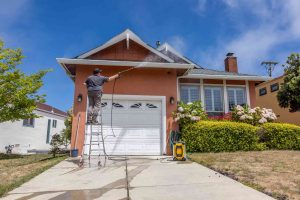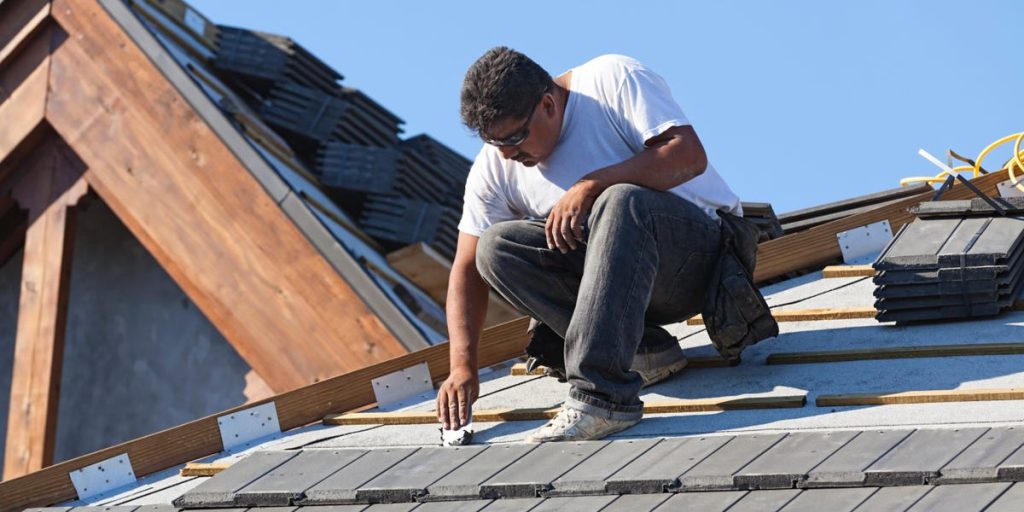Our experts answer readers’ personal loan questions and write unbiased product reviews (here’s how we assess personal loans). In some cases, we receive a commission from our partners; however, our opinions are our own.
- Homeowners have many financing options to cover their roof repair or replacement.
- Personal loans, home equity loans, HELOCs, credit cards, and grants are among the most common.
- The ideal funding option for you depends on your unique financial situation.
When you have a leaky roof, repairing or replacing it as soon as possible is going to be a top priority. According to home services website Angi, the average cost to replace a roof is $9,113. Many homeowners simply don’t have the cash needed to cover it, leaving them looking for ways to finance the job.
How to finance a roof
Among the most common roof-financing options are: personal loans, home equity loans, home equity lines of credit (HELOCs), credit cards, government loans, and government grants.
Finance a roof with a personal loan
A personal loan is money you borrow from a bank, credit union, or an online lender that you repay with interest over a set period of time. After obtaining the lump sum, you’ll be required to make fixed monthly payments until the loan term. Most of them are unsecured, meaning that you don’t need to provide any collateral
“A personal loan can be a good option for financing a roof if you do not have enough home equity to access a HELOC or home equity loan,” says Shaun Martin, real estate investor and owner of We Buy Houses In Denver.
“However, personal loans often come with higher interest rates than other financing options and they may also require more stringent credit qualifications,” Martin says.
No financing option is perfect, but the fixed monthly payments make it easier to budget for this cost. Another benefit of personal loans is that with an unsecured loan, the lender cannot seize collateral (such as your home) if you don’t keep up with the payments.
If you want to finance your roof with a personal loan, the first step to get a personal loan is to compare your options across multiple lenders. Each lender offers different interest rates and loan terms that can have a big impact on your costs.
Once you find a loan that suits your needs, it’s time to move forward with an application. Depending on the lender, you might receive your funds on the same day you apply or several days later.
Next step: See Insider’s picks for the best home improvement loans >>
Use a home equity loan or HELOC to finance a roof
For homeowners with a significant amount of equity in their property, tapping into that value through a home equity loan or home equity line of credit (HELOC) are options. When you choose a home equity-based option, you can generally tap into lower interest rates than other financing options.
“HELOCs provide the advantage of borrowing against your home’s equity as and when needed, while home equity loans offer a lump sum up front,” says Mike Roberts, mortgage broker and co-founder of City Creek Mortgage.
“It may sound appealing, especially if you have substantial equity and value the flexibility of accessing funds on demand,” Roberts says. “However, it’s important to keep in mind that using your home as collateral carries the risk of foreclosure if payments are missed.”
While you might be able to get a lower interest rate than you could with a personal loan, the secured nature of this kind of debt puts your home at risk. Essentially, you are taking on a second mortgage payment, which means the lender can foreclose on your home if you don’t keep up with the payments.
In general, home equity-based financing takes longer to get than other types of loans. That’s because the lender will likely require a home appraisal before approval. Most lenders limit your borrowing options up to 85% or less of the value of the equity in your home.
Next steps: See Insider’s picks for the best home equity loans and best HELOC lenders >>
Finance your roof with a credit card
It’s possible to put your roof purchase on a credit card, but high interest rates can make this less than an ideal option.
In the first quarter of 2023, the average credit card interest rate was 20.09%, according to the Federal Reserve. It’s easy to see how this interest rate could push the actual cost of your roof replacement higher. However, the relatively easy access to this type of financing could make it the right option for your situation.
Before you move forward with a credit card, understand how credit card interest works and be realistic about your ability to repay the debt. This option might be best for a homeowner who needs to get their roof replaced immediately but won’t get their hands on the cash required right away. For example, you might need some time to liquidate an asset.
If you decide to use a credit card to fund your roof replacement, selecting the right credit card is critical. You’ll want to find a card that strikes a balance between reasonable APRs, high credit limits, and rewards-earning potential.
Next step: See Insider’s picks for the best credit cards for home improvement projects >>
Government loans and grants for roof financing
Some homeowners can turn to government loans and grants as a way to finance a roof replacement. You may be able to find these opportunities at a federal, state, and local level. Below are some ways to pursue this option:
- USDA Section 504 Home Repair program: The US Department of Agriculture offers loans and grants to very-low-income homeowners to make necessary repairs to their homes. While the grant options are only available for homeowners over age 62, the loans are an option for very-low-income homeowners of all ages in qualifying areas. The maximum amount of assistance per homeowner is $50,000.
- FHA Title 1 loans: The Fedral Housing Administration offers this option to help homeowners finance permanent property improvements. If you qualify, you can borrow a maximum amount of $25,000 for a single-family home.
- Grants.gov: You can seek out home repair grants for homeowners through Grants.gov.
If you are able to obtain grant funding to repair your roof, that’s an ideal option. After all, you won’t have to repay those funds. But even government loans often come with relatively affordable interest rates, if you qualify.
Roof financing FAQs
You can tap the value of your home to pay for a new roof through a home equity loan or home equity line of credit. Each of these allows you to borrow against the value of your home and pay the money back, with interest, over time.
You can finance a roof with bad credit, but it might cost you more than it would if you had good credit. The interest rate you can get on loans is determined largely by your credit score.
The credit score needed to borrow money through a personal loan will vary by lender. Generally, borrowers need a credit score in the mid-600s to qualify. While you can still get a loan with a lower credit score, you’ll have to pay a much higher interest rate.
The timeline from application to approval for roof financing varies from lender to lender. In some cases, you might receive the funds on the same day you apply. But in other cases, it might take days or weeks to obtain the funds.
Replacing or repairing a roof may be considered an investment. Doing so can increase the value of your home, increasing the amount of equity you have in it.
As with any expense, it’s a good idea to put down as much cash as you can afford toward the cost of a roof replacement or repair before borrowing any funds. That way the principal will be lower, and you’ll pay less interest over the life of the loan.
Read the full article here














